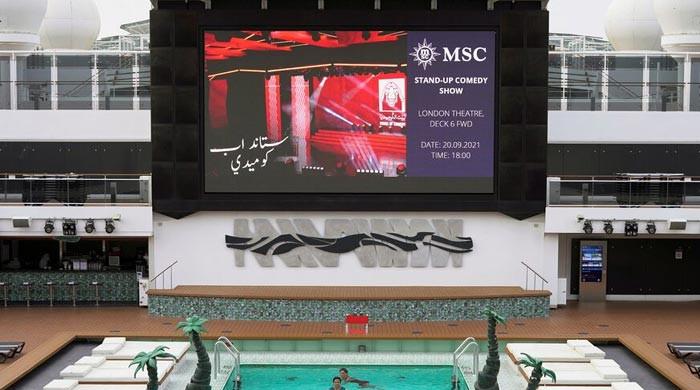The painting was dated using a new technique and suggests that Europe was not the first place where cave art emerged.
Scientists have discovered what they believe to be the world's oldest work of art, depicting three people gathered around a large red pig, in a cave on the Indonesian island of Sulawesi.
Research published Wednesday indicates the painting was created about 51,200 years ago.
“This is the oldest evidence of storytelling,” Maxime Aubert, an archaeologist at Australia's Griffith University and co-author of a new study published in Nature, told AFP news agency.
Aubert was part of the team that identified the previous record holder, a photograph of a warty pig believed to be at least 45,500 years old.
The latest discovery, found inside the Leang Karampuang Cave in the Maros-Pangkep region of South Sulawesi, is in poor condition.
The cave depicts three people around a wild pig, 92 x 38 cm (36 x 15 in), painted in a single shade of dark red pigment. There are also other images of pigs in the cave.
“The juxtaposition of the figures – the way they are positioned relative to each other – and the way they interact – was clearly deliberate and conveys an unmistakable sense of action. There is something going on between these figures. A story is being told. Obviously, we don’t know what that story was,” said Griffith University archaeologist Adam Brumm, another of the study’s authors.
Aubert speculated that the paintings were probably made by the first group of humans to move through Southeast Asia before reaching Australia about 65,000 years ago.
“It's probably just a matter of time before we find older samples,” Aubert added.
It was previously thought that the first narrative art had emerged in Europe.
The date given for the Indonesian rock art is “quite provocative” because it is much older than what has been found elsewhere, including in Europe, said Chris Stringer, an anthropologist at the Natural History Museum in London.
Stringer, who was not involved in the research, said the experienced team's findings appeared robust but needed to be confirmed with additional dating.
“I think this find reinforces the idea that figurative art was first produced in Africa 50,000 years ago and the concept spread as our species expanded,” he told AFP.
“If that is true, new evidence to support this in other areas, including Africa, is yet to emerge.”
Researchers used a new scientific approach to determine the minimum age of the Leang Karampuang rock painting by using a laser to date a type of crystal called calcium carbonate that formed naturally on the painting.
Little is known about the people who created the Sulawesi rock paintings.
“This discovery of very old rock art in Indonesia confirms the idea that Europe was not the birthplace of rock art, as had long been assumed. It also suggests that storytelling was a much older part of human history, and art history in particular, than previously believed,” said Brumm.
“The oldest rock art in Sulawesi is not ‘simple’,” Aubert added. “It is quite advanced and shows the mental capacity of the people of that time.”












